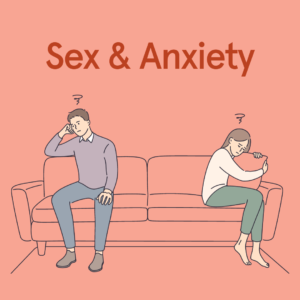Studies show that the vast majority of us occasionally have unwanted violent thoughts about injuring ourselves or others. For example, we might briefly fantasize about harm befalling the guy who just cut us off in traffic and then scared us even more when he immediately slammed on his brakes to avoid other cars. Although we don’t like to acknowledge them, about 85 percent of people do experience some type of random harmful thoughts, but they are fleeting and don’t disturb our normal lives.
For people who have obsessive compulsive disorder (OCD), however, having unwanted thoughts about hurting someone may not be able to be dismissed so easily. In fact, these thoughts can become frequent enough to become intrusive, taking over the person’s life. When this happens, the individual is dealing with Harm OCD.
Defining Harm OCD
Harm OCD is a subset of classic obsessive compulsive disorder (OCD). The condition is characterized by having aggressive, intrusive thoughts of doing violence to someone, as well as the responses the person uses to cope with these thoughts. OCD makes the individual feel that they can’t trust their own mind. Wherein someone without OCD could have a violent thought and recognize that it is simply a thought, a person with OCD who has the Harm OCD subset worries that just having the thought is somehow meaningful. As a result, they want full assurance that they won’t act on the thought. Having these intrusive thoughts leads to engaging in compulsions and rituals to decrease the anxiety the person feels about the thought. Once they complete the ritual, they feel less anxious, but then the intrusive thought comes again, setting up endless cycles of doubt and fear.Harm OCD Symptoms
Those who suffer from Harm OCD may:- Have aggressive thoughts or see images in their minds of violence and worry that this means they will carry them out.
- Fixate on the idea that they could inadvertently be responsible for causing harm and not realize it (for example, they may worry about running someone over by accident, and then leaving the scene because they were unaware of what they had done).
- Be terrified that they will hurt someone (or themselves) on impulse – whether intentionally or not.
- Worry they are hiding their true nature from themselves and others and that they are really a vicious, aggressive person who will act out someday because they will lose control.
- Hiding dangerous objects (kitchen knives, poisonous chemicals, medications, ropes, razor blades, and the like) so they aren’t tempted to use them to hurt someone.
- Reviewing their every action to see if they could have, or did, cause harm
- Avoiding watching the news or such things as violent movies, television shows or videos, so as to keep from triggering violent ideas.
- Spending excessive amounts of time online, researching violent crimes and ideology in an effort to know whether they have things in common with the offenders.
- Compulsive praying or carrying and using spiritual items so that they won’t lose control.
- Asking others if they think the person with Harm OCD could hurt others.
- They may also endlessly question themselves in an effort to answer, once and for all, if they are capable of injuring anyone (including themselves).
Treatment for Harm OCD
As with classic OCD, Exposure and Ritual Prevention (ERP) is the treatment for any OCD subset, like Harm OCD. The first part of the therapy – exposure – happens when the individual allows themselves (with the help of their therapist) to encounter the triggering object, image, or environment that begins their cycle of intrusive thoughts. The idea is to confront what they fear, but to refrain from using their compensating compulsions (ritual prevention). By resisting the urge to complete a ritual after the exposure and then finding that they do not act on the violent thought, the person builds self-confidence and begins to retrain their brain. This leads to learning to trust that their thoughts are simply thoughts. Over time, consistently avoiding the use of compulsions while remaining nonviolent helps break the cycle of doubt. For the best chance of overcoming Harm OCD, find a therapist who specializes in treating classic OCD. Trying to get past intrusive thoughts on your own can keep you stuck because it can be difficult to stop “testing” yourself to see how you are reacting – which is a ritual that could reinforce your false beliefs.Have Further Questions?
If you are concerned about your violent thoughts or worried that you may harm yourself or someone else, seek help from the OCD-trained therapists at The Center for Treatment of Anxiety and Mood Disorders in Delray Beach, Florida. For more information, contact us or call us today at 561-496-1094.Dr. Andrew Rosen
Dr. Andrew Rosen PHD, ABPP, FAACP is a Board-Certified Psychologist and the Founder and Director of The Center for Treatment of Anxiety and Mood Disorders, as well as, the Founder of The Children’s Center for Psychiatry Psychology and Related Services.





